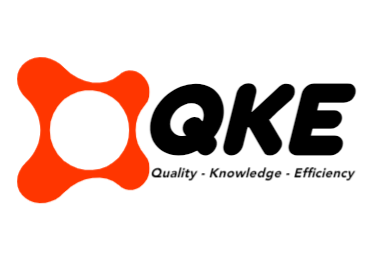Barcode inspection application: Enhance supply chain management
Integrating barcode inspection technology in automated packaging and warehousing systems has significantly improved the efficiency and accuracy of product tracking and inventory management processes. Dive into the transformative impact of these advanced solutions in supply chain management, streamlining operational processes for businesses. It explores the advantages of using barcode inspection applications in automated packaging and warehousing operations, empowering companies to navigate today's demanding market landscape with easy effective.
Trace and track solutions in supply chain management
In today's dynamic and fiercely competitive business landscape, the importance of tracing and tracking solutions in supply chain management is paramount. The solutions play a key role in driving transparency, operational efficiency and accuracy across the entire supply chain, spanning from manufacturing to distribution.
Through tracking solutions, businesses can monitor and trace the real-time movement of goods and raw materials, providing invaluable insights into their whereabouts, status and conditions. of them. Leveraging technologies such as barcode inspection applications allows businesses to automate product tracking and tracing processes, helping to increase visibility and increase control of supply chain operations.
Analyze the application of barcode checking technology in warehouses and automatic packaging
In the field of warehousing and automated packaging, the implementation of barcode inspection technology plays a key role in transforming supply chain management. These innovative applications leverage cutting-edge technology to ensure efficient and accurate cargo monitoring throughout the entire logistics process. Through the use of barcode scanning and inspection systems, companies can optimize their operations, reduce errors, and improve overall efficiency.
In the context of automated packaging, barcode inspection technology facilitates the seamless integration of barcode labels into products, packaging materials, and shipping containers. This not only allows for quick and accurate identification of items, but also ensures compliance with industry standards and regulations. By automating labeling processes, companies can significantly reduce human errors and speed up packaging operations, ultimately leading to increased efficiency and cost savings.
Likewise, in the field of warehouse operations, barcode inspection technology plays a vital role in inventory management, order processing and shipment tracking. By diligently scanning and validating barcode data, companies can maintain a real-time overview of their inventory levels, track product movement, and expedite fulfillment order. This level of transparency and oversight is indispensable for optimizing warehouse functions, minimizing inventory shortages, and improving customer satisfaction.
Overall, incorporating barcode inspection technology into automated warehousing and packaging operations offers countless benefits, such as enhanced accuracy, increased efficiency, and improved traceability . As the field of supply chain management continues to evolve, companies that embrace these advanced technologies will be better prepared to adjust to changing market conditions and drive sustainable growth in the industry. competitive environment.
Analyze barcode inspection applications in the context of automated packaging and warehousing
The importance of barcode inspection applications in transforming supply chain management, especially in the field of packaging and automated warehousing, cannot be overstated. These applications use advanced technology to ensure efficient and accurate product monitoring throughout the entire logistics process. Through the use of barcode scanning and inspection systems, businesses can optimize their processes, reduce errors, and increase overall efficiency.
In automated packaging, barcode inspection applications enable the seamless integration of barcode labels into products, packaging components, and shipping containers. This not only facilitates quick and error-free identification of items, but also ensures compliance with industry standards and regulations. By automating the labeling process, companies can significantly reduce human errors and speed up packaging operations, thereby improving efficiency and saving costs.
Similarly, in warehouse operations, barcode inspection applications are important for inventory control, order fulfillment, and shipment monitoring. Through accurate scanning and validation of barcode data, businesses can maintain real-time insight into the status of their inventory, track product movement, and expedite processing order. This level of visibility and oversight is critical to enhancing warehouse operations, minimizing inventory shortages, and improving customer satisfaction.
More broadly, incorporating barcode inspection applications into automated packaging and warehousing processes offers numerous benefits, from increased accuracy and amplification efficiency to traceability is enhanced. As supply chain management evolves, businesses that harness these sophisticated technologies will find themselves better prepared to navigate changing market trends and drive sustainable expansion in a competitive landscape. painting.
Enhance supply chain management through tracking and tracing solutions
Integrating track and trace solutions into supply chain management offers many benefits that can fundamentally improve operational efficiency and reliability. A key benefit lies in the enhanced visibility and transparency maintained throughout the entire supply chain process. By using barcode inspection technology for automated packaging and storage, businesses are empowered to monitor the movement of goods in real time, from production to delivery.
This enhanced level of transparency equips organizations with the ability to detect and overcome any potential obstacles or obstacles in advance, leading to more refined inventory control and reduced operating costs. Additionally, monitoring and control solutions provide valuable data insights that can be used to refine supply chain processes, enhance decision-making, and streamline overall business operations.
The notable advantage of such systems is their ability to ensure product authenticity and maintain quality standards. Through the application of track and control solutions, companies can trace the origin of products, track their trajectory throughout the supply chain and validate their authenticity at every stage . This not only helps prevent counterfeiting and fraud, but also enhances customer trust and satisfaction.
